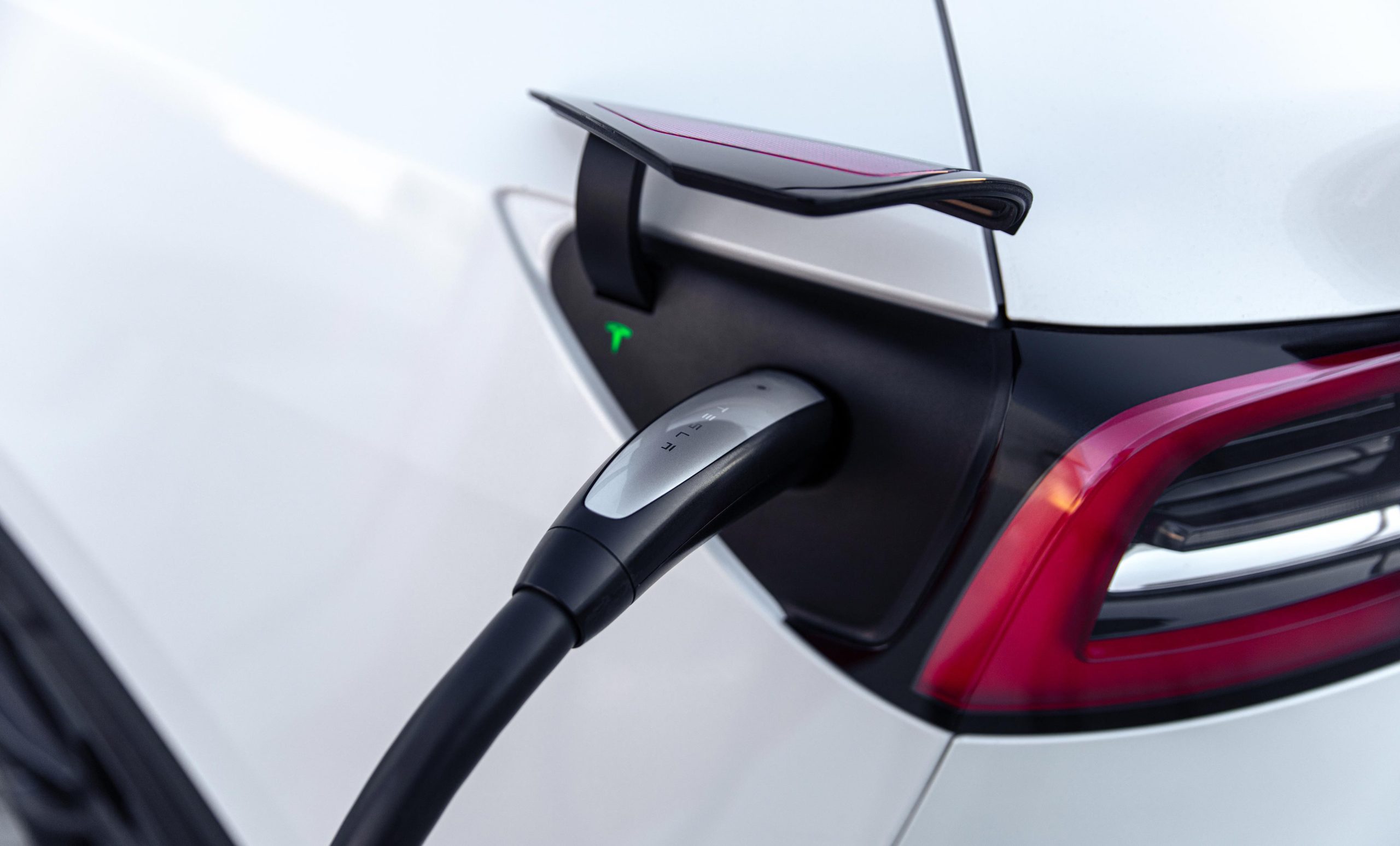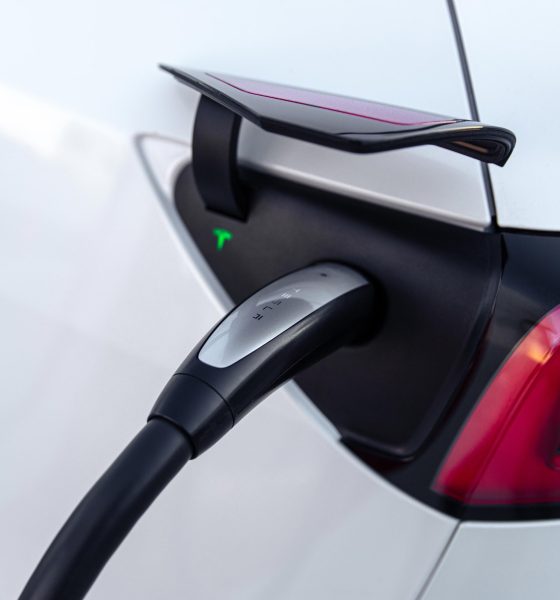When Tesla first struck a deal with Aptera in early 2023 to give the company its North American Charging Standard (NACS), it seemed like it would be one of the only companies to do so. The partnership granted Aptera the ability to use Tesla Superchargers when its vehicles finally hit the road, a major advantage for a startup with such a small size.
But several months later, Tesla CEO Elon Musk and Ford CEO Jim Farley announced they would be hopping on a public conference call known as a “Twitter Spaces,” where the two announced the Detroit-based automaker would also adopt the NACS connector in 2024, offering Ford EV drivers the opportunity to access Tesla Superchargers across North America.
Tesla to open 12,000 Superchargers to Ford across U.S. and Canada
Then GM did it.
Then Rivian.
And Volvo/Polestar.
And Mercedes-Benz, Nissan, Fisker, Honda, Acura, Jaguar, Hyundai, Kia, BMW, and Toyota/Lexus all followed.
While these companies are either seasoned in their EV efforts or not, there is one thing they all have in common: they lack an in-house charging network for their drivers. For years, these companies have chosen to opt into third-party connectors run by companies like ChargePoint, Volta, Electrify America, and others.
Good morning! @RateYourCharge EA, EVgo, and Tesla Supercharger update from Stamford, CT.
Can you tell that that NY area makes me angry? ? pic.twitter.com/wXEHKG2CSe
— Kyle Conner (@itskyleconner) October 21, 2023
Tesla is the only car company in the U.S. to operate an expansive network of its own chargers, and it has a reputation for having well-maintained and operational stalls that are rarely under the weather in terms of their ability to function.
Other manufacturers understand Tesla’s prowess with its charging infrastructure, but two large companies still have yet to adopt the NACS: Volkswagen and Stellantis.
Volkswagen was once a formidable ally of Tesla’s, but that goes back to prior management. Herbert Diess had the helm at VW for years and worked hard to push the German automaker to relevance in the EV sector. His approach ruffled the feathers of many at VW Group, and ultimately, Diess left to pursue other things.
Stellantis has several brands under its umbrella, including Jeep, Dodge, Chrysler, Maserati, and Alfa Romeo, to name a few. It has also opted not to adopt Tesla’s NACS port for reasons not known. However, it said it is mulling a switch, which Toyota also said it would do, and it eventually made the jump.
It seems unlikely any car companies out there would not want to take advantage of such an expansive charging network for its vehicles. In past articles, I have stated that Tesla’s biggest advantage, in my opinion, is the charging network. Giving up this advantage will help competitors catch up to Tesla, and consumers might be prone to buy other EVs because they can access the network regardless of the car they drive.
However you feel about Tesla and its CEO Elon Musk, the company’s mission has always been to accelerate the transition to sustainable energy, and this move is one that truly seems to make many believe that it is more focused on helping sustainability succeed than itself as a company.
I’d love to hear from you! If you have any comments, concerns, or questions, please email me at joey@teslarati.com. You can also reach me on Twitter @KlenderJoey, or if you have news tips, you can email us at tips@teslarati.com.

News
Tesla FSD fleet is nearing 7 billion total miles, including 2.5 billion city miles
As can be seen on Tesla’s official FSD webpage, vehicles equipped with the system have now navigated over 6.99 billion miles.

Tesla’s Full Self-Driving (Supervised) fleet is closing in on almost 7 billion total miles driven, as per data posted by the company on its official FSD webpage.
These figures hint at the massive scale of data fueling Tesla’s rapid FSD improvements, which have been quite notable as of late.
FSD mileage milestones
As can be seen on Tesla’s official FSD webpage, vehicles equipped with the system have now navigated over 6.99 billion miles. Tesla owner and avid FSD tester Whole Mars Catalog also shared a screenshot indicating that from the nearly 7 billion miles traveled by the FSD fleet, more than 2.5 billion miles were driven inside cities.
City miles are particularly valuable for complex urban scenarios like unprotected turns, pedestrian interactions, and traffic lights. This is also the difference-maker for FSD, as only complex solutions, such as Waymo’s self-driving taxis, operate similarly on inner-city streets. And even then, incidents such as the San Francisco blackouts have proven challenging for sensor-rich vehicles like Waymos.
Tesla’s data edge
Tesla has a number of advantages in the autonomous vehicle sector, one of which is the size of its fleet and the number of vehicles training FSD on real-world roads. Tesla’s nearly 7 billion FSD miles then allow the company to roll out updates that make its vehicles behave like they are being driven by experienced drivers, even if they are operating on their own.
So notable are Tesla’s improvements to FSD that NVIDIA Director of Robotics Jim Fan, after experiencing FSD v14, noted that the system is the first AI that passes what he described as a “Physical Turing Test.”
“Despite knowing exactly how robot learning works, I still find it magical watching the steering wheel turn by itself. First it feels surreal, next it becomes routine. Then, like the smartphone, taking it away actively hurts. This is how humanity gets rewired and glued to god-like technologies,” Fan wrote in a post on X.
News
Tesla starts showing how FSD will change lives in Europe
Local officials tested the system on narrow country roads and were impressed by FSD’s smooth, human-like driving, with some calling the service a game-changer for everyday life in areas that are far from urban centers.

Tesla has launched Europe’s first public shuttle service using Full Self-Driving (Supervised) in the rural Eifelkreis Bitburg-Prüm region of Germany, demonstrating how the technology can restore independence and mobility for people who struggle with limited transport options.
Local officials tested the system on narrow country roads and were impressed by FSD’s smooth, human-like driving, with some calling the service a game-changer for everyday life in areas that are far from urban centers.
Officials see real impact on rural residents
Arzfeld Mayor Johannes Kuhl and District Administrator Andreas Kruppert personally tested the Tesla shuttle service. This allowed them to see just how well FSD navigated winding lanes and rural roads confidently. Kruppert said, “Autonomous driving sounds like science fiction to many, but we simply see here that it works totally well in rural regions too.” Kuhl, for his part, also noted that FSD “feels like a very experienced driver.”
The pilot complements the area’s “Citizen Bus” program, which provides on-demand rides for elderly residents who can no longer drive themselves. Tesla Europe shared a video of a demonstration of the service, highlighting how FSD gives people their freedom back, even in places where public transport is not as prevalent.
What the Ministry for Economic Affairs and Transport says
Rhineland-Palatinate’s Minister Daniela Schmitt supported the project, praising the collaboration that made this “first of its kind in Europe” possible. As per the ministry, the rural rollout for the service shows FSD’s potential beyond major cities, and it delivers tangible benefits like grocery runs, doctor visits, and social connections for isolated residents.
“Reliable and flexible mobility is especially vital in rural areas. With the launch of a shuttle service using self-driving vehicles (FSD supervised) by Tesla in the Eifelkreis Bitburg-Prüm, an innovative pilot project is now getting underway that complements local community bus services. It is the first project of its kind in Europe.
“The result is a real gain for rural mobility: greater accessibility, more flexibility and tangible benefits for everyday life. A strong signal for innovation, cooperation and future-oriented mobility beyond urban centers,” the ministry wrote in a LinkedIn post.
News
Tesla China quietly posts Robotaxi-related job listing
Tesla China is currently seeking a Low Voltage Electrical Engineer to work on circuit board design for the company’s autonomous vehicles.

Tesla has posted a new job listing in Shanghai explicitly tied to its Robotaxi program, fueling speculation that the company is preparing to launch its dedicated autonomous ride-hailing service in China.
As noted in the listing, Tesla China is currently seeking a Low Voltage Electrical Engineer to work on circuit board design for the company’s autonomous vehicles.
Robotaxi-specific role
The listing, which was shared on social media platform X by industry watcher @tslaming, suggested that Tesla China is looking to fill the role urgently. The job listing itself specifically mentions that the person hired for the role will be working on the Low Voltage Hardware team, which would design the circuit boards that would serve as the nervous system of the Robotaxi.
Key tasks for the role, as indicated in the job listing, include collaboration with PCB layout, firmware, mechanical, program management, and validation teams, among other responsibilities. The role is based in Shanghai.
China Robotaxi launch
China represents a massive potential market for robotaxis, with its dense urban centers and supportive policies in select cities. Tesla has limited permission to roll out FSD in the country, though despite this, its vehicles have been hailed as among the best in the market when it comes to autonomous features. So far, at least, it appears that China supports Tesla’s FSD and Robotaxi rollout.
This was hinted at in November, when Tesla brought the Cybercab to the 8th China International Import Expo (CIIE) in Shanghai, marking the first time that the autonomous two-seater was brought to the Asia-Pacific region. The vehicle, despite not having a release date in China, received a significant amount of interest among the event’s attendees.










